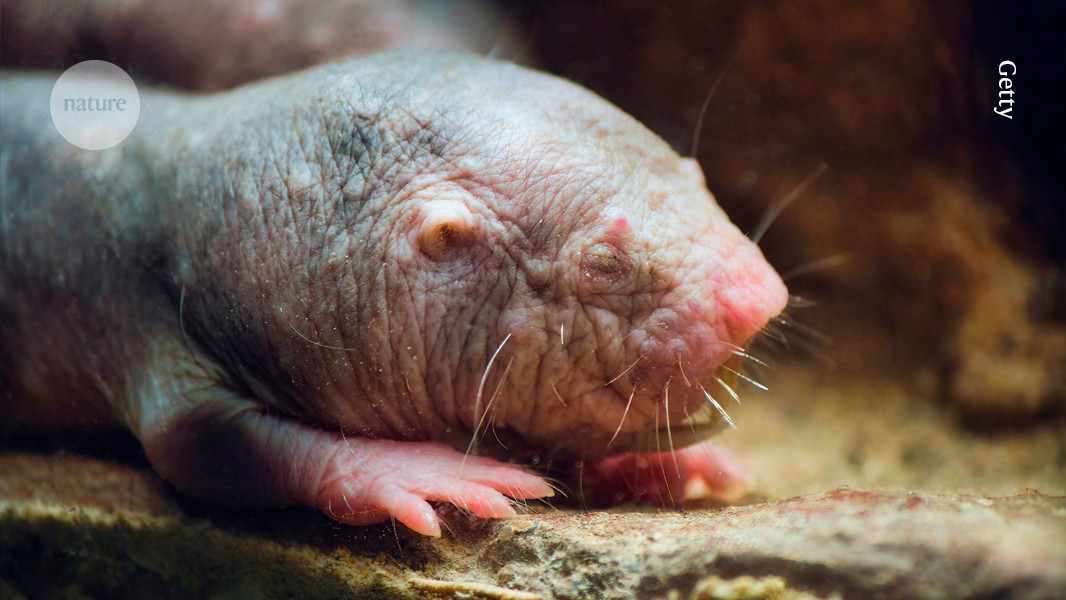Perhaps you live in the kind of household that likes to divide up the chores. You take the dishes, while someone else does the trash. If so, you are not so far off from the habits of a naked mole-rat, according to a new study.
The findings, published Wednesday in the journal Science Advances, show that individual naked mole-rats perform specific duties for their colony, including digging, transporting garbage, and cleaning the “toilets.” The study reveals that the rats undertake a form of task allocation that helps the colony function more efficiently, according to the researchers.
“Overall, our findings reveal the distinct roles of breeders and the remarkable behavioral diversity among nonbreeders, underscoring the complexity of naked mole-rat social organization,” they write.
An elusive social system
Naked mole-rats (Heterocephalus glaber) are small, nearly hairless rodents that live underground in large colonies. These colonies can be made up of several hundred individuals and stretch across miles of tunnels.
These colonies are eusocial, meaning they exhibit the highest level of organization in animal social behavior. In eusocial systems, a single female and a few males produce all the offspring, while most other individuals are put to work. Bee colonies are another common example of an eusocial system. Remarkably, naked mole-rats are one of only two known mammal species to exhibit this social structure.
Much like bees, scientists have found that naked mole-rats perform a variety of tasks, but it was unclear whether individuals consistently stick to specific jobs or are more flexible. The answer to this question has long eluded researchers due to the challenges of monitoring an entire underground colony over long periods of time, but a team led by Masanori Yamakawa of Kumamoto University in Japan found a way.
Tracking an underground workforce
Yamakawa and his colleagues developed an automated radio-frequency identification (RFID) tracking system to monitor 102 naked mole-rats across five captive colonies for 30 days.
Each colony assigned specific functions to different “chambers,” typically including a nest, a toilet, a garbage, and six additional chambers. The nest was where individuals huddled and rested, the garbage was where they deposited waste such as excess food or dried feces, and the toilet—well, you get the picture.
The researchers implanted microchips in the mole-rats and installed detectors throughout their colony boxes, allowing them to track everywhere they went and which individuals they interacted with. While the breeding cohort stuck together, non-breeding individuals could be divided into six “clusters” based on their behavior.
Based on which chambers they spent long periods of time in, the researchers inferred that these groups were carrying out different, specific tasks. For example, cluster 1 individuals exhibited high mobility and significant garbage chamber occupancy, suggesting they may serve as garbage men. Meanwhile, cluster 5 individuals—which spent a lot of time in toilet chambers—may be responsible for cleaning the latrine.
The researchers found that the body weight and age of individuals had a significant effect on their cluster assignment, suggesting that naked mole-rats’ jobs may change as they grow. But most individuals (95%) stuck with their assigned roles for the study’s full 30-day period, suggesting they don’t swap tasks often. Sad times for the toilet mole-rats, perhaps.
This work offers a detailed look at the complex social structure of this elusive species. Future studies could build on these insights by manipulating variables to trigger behavioral changes or incorporating other observation methods, according to the researchers. This could help “uncover underlying mechanisms driving cooperative society,” they wrote.
Source link


